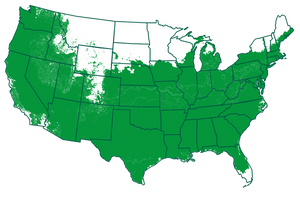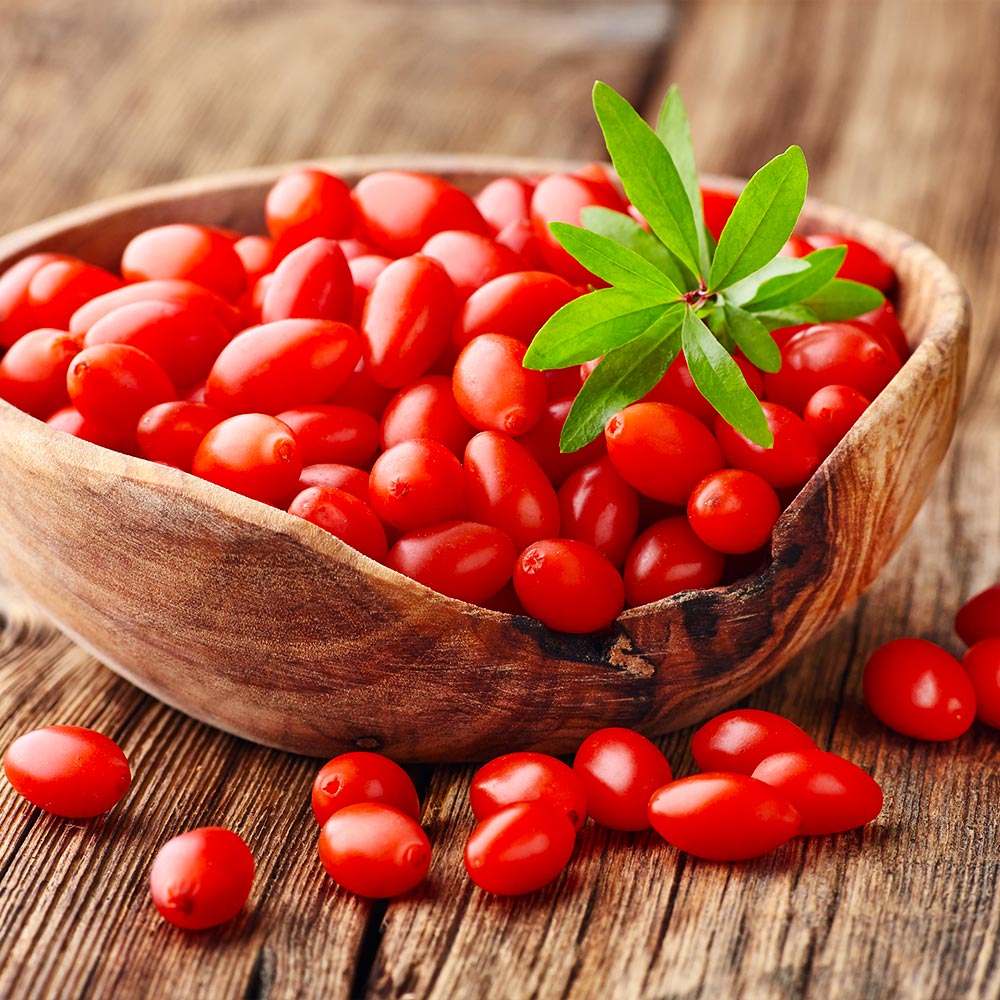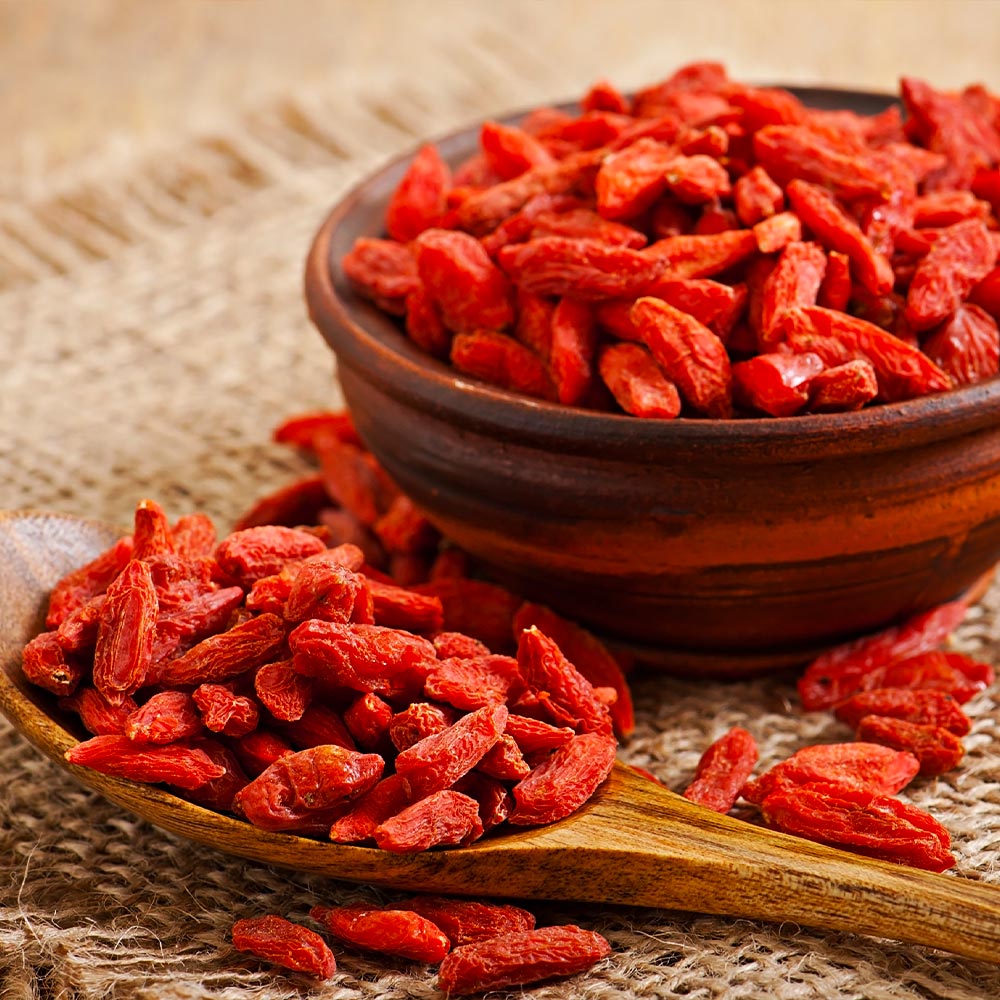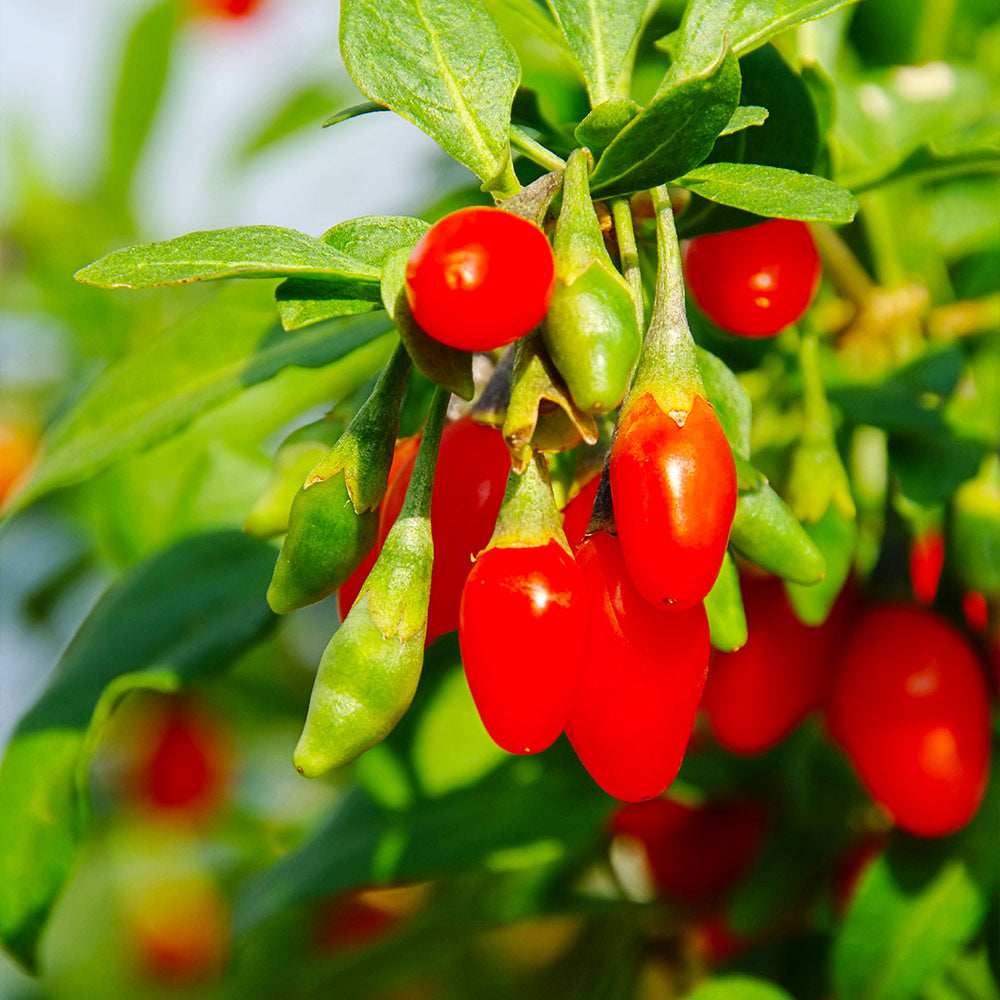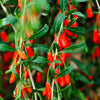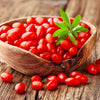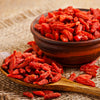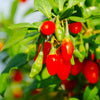* Images shown are of mature plants

Have questions? Talk with our Plant Experts (800) 973-8959
Save 25% on $200+ with code FALL25.
Questions? Call our plant experts: (800) 973-8959
Bigger Plants, More Berries, Years Sooner
A superfood that's Super Easy!
Goji Berries (Lycium barbarum) are used to treat a broad range of ailments and diseases. The superfood is packed with antioxidants, amino acids, Vitamins C, B and E, essential fatty acids - and are widely used to reduce inflammation.
Get Fruit Fast
Some Goji Berry plants take 3-5 Years longer to fruit than our trees. That's because the majority of nurseries grow from seed, delaying the production of berries up to 5 years. We don't grow from seed. Your Gojis are started from cuttings taken from mature plants. So your Goji thinks it should be producing berries right away. This natural process is thousands of years old and is used by organic farms. It takes more work on our part... but you get better tasting berries, years sooner. And a plant you will be much happier with.
Grow Them Yourself Without the Chemicals.
Most Goji Berries come from China where they're often treated with chemicals that have been long banned in the US. They can turn an incredibly healthy food into something toxic. This is one of the easiest plants to grow organically. It's highly disease resistant and rarely bothered by insects. Even deer and rabbits leave it alone. There is no need for any chemicals or sprays. Just plant it and pick.
Easy to Care For
Goji Berry plants are naturally drought tolerant and prefer well-draining soil. They thrive in the ground in zones 5-9, tolerating temps down to -10 F and will flourish well in the dry west or humid east. If you're outside of zones 5-9, you can still grow these berries. Plant them in containers and bring them inside when the temperatures drop. Goji will grow in sun or partial shade, but your harvest will be greater with more sun. When planting outside, place your Gojis every 4 ft. They grow into viney bushes. Some customers grow them on a trellis. They are self-pollinating but do better with additional companions.
Eat Goji Berries All Year Long
Your berries get sweeter the longer you leave them on the bush and will be much tastier than what you buy in the store. Eat them fresh, juice them, freeze them or dry them on newspaper. Most people prefer to eat their berries like raisins. Grow several plants and enjoy healthy Goji Berries all throughout the year. Pick $175 worth of Berries each year from a single plant! A mature plant will produce almost 7 lbs of berries under good conditions. We don't know of any other fruit plant that has this incredible of a payback. Plus it continues to produce year after year.
Pollination Info
Goji Berry Pollination
Goji Berrys are self-fertile. You will get fruit with only one plant. However, adding an additional Goji Berry will drastically increase the size of your crop.
Planting & Care
The Goji berry plant (also known as the Wolfberry) is a self-pollinating shrub with long, flexible canes and clusters of small, grey/green leaves. The flowers are a brilliant shade of royal purple and they appear in late spring to early summer. They give way to juicy, bright red fruits that resemble small grape tomatoes. They get sweeter as they mature on the plant. Goji plants continue to flower and produce fruit through the first heavy frost.
Choosing a location: Gojis do best in full sun but can tolerate a bit of shade and perform best in well draining soils with an acidity pH ranging from 6.8 to 8.1 they also do wonderfully when planted in pots.
Planting Directions (potted):
1) Prepare your container, which should be at least 2 pot sizes larger than what it arrived in. Your container or pot should have proper drainage holes in the bottom, so you may also want to provide a drain pan for the container to sit in. If your container doesn’t have drainage holes, you can easily add them with a drill.
2) To provide the best growing medium and drainage, mix about 1/3 sand with 2/3rds of your soil. Although any good potting soil will work. Fill the container and leave 2 to 3 inches at the top.
3) Dig a hole in the middle of the container and make sure that it’s a couple of inches deeper than the crown of the plant (where the roots meet the stem). Push loose soil back in with the roots until they lightly rest on the soil in the hole, and make sure the crown is level with the top of the soil.
4) Push the soil back in, filling around the roots and up to the crown, gently tamping as you go. Water well and add more soil around the plant if necessary and watering again to let the soil settle. Keep the soil around your Goji plant moist, but not overly wet, until you see new growth sprouting, usually in about 2-3 weeks.
5) Apply an inch or two of mulch in order to help with moisture retention (and because it looks nice). If you mulch, you will need to depend on touch to check soil moisture.
Note: This product grows best in well-draining soil. When you receive your plant, you may notice small, white beads or rocks in the soil - this medium is added to increase drainage and keep your plant happy and healthy!
*Remember that plants in containers will feel the heat and cold more because their roots are in soil above the ground. Stay aware of your weather patterns. Provide adequate moisture when it is extremely hot and dry, as potted plants will usually dry out quicker.
Planting Directions (in ground): If you live in growing Zone 5 or warmer (where it will usually not get colder than -15 F) you can grow the Goji outdoors. When planting in the ground you can follow the exact same directions above, just be sure to choose an area that has access to a lot of sun, free of pesticides from lawn care and away from the road (dust and pollution can contaminate your plant). If planting more than one Goji it is not recommended to have them closer than 48 inches between plants. Carefully monitor your soil moisture, because it is critical for it to not dry out until you see new growth sprouting, which usually takes about two weeks.
Once the average daytime temperature drops below 50 degrees, your Goji plant will start going into its dormant state. It will stay dormant until springtime temperatures are above 50 degrees. If you live in an area that does not get that cold, keeping your plant pruned back to new growth is the key to keeping the berries coming.
Watering: Water the plants every day if it doesn’t rain for at least the first 30 days outdoors and then only water during sustained droughts afterward. The soil should absorb water, but also have good drainage. If your potted plants are outside during the warm season in colder climates, make sure they do not get saturated with too much rain and that the excess water is able to drain away. The plants will drown if they are soaked in water too long. It is important that you water the plants at the base, try to avoid getting water on the leaves since this will promote fungus. The best time to water as to avoid fungal disease is in the early morning.
Pruning: Gojis do not require pruning to grow well and produce fruit. However, you may find the plant is more manageable and easier to harvest when its lateral (horizontal) branches are lightly pruned to encourage branching and the production of vigorous new growth. Prune lightly in early spring, removing dead and badly placed shoots. If necessary, cut overlong stems back to a well-placed branch and remove some of the oldest wood. To restrict growth on plants in containers, cut new growth back by up to half in summer (however, this might reduce the yield).
Fertilizing: If you can get a hold of some compost, vermiculite, rotted manure, or other organic matter, this would be very beneficial. Do not use chemical fertilizers such as Miracle Grow to grow goji berries as this disrupts the soil and will only create more work for yourself. If you supply them with enough healthy, organic matter such as manure, they will not need chemical fertilizers.
Harvesting: Taste is your best indicator as to when your berries are ready. Goji berries should be plucked off by hand once they turn a brilliant shade of red and they taste sweet. It is best to harvest before the first frost because cold can diminish the flavor of the fruit. The berries can easily be dried, simply them in a single layer on some newspaper.
For centuries the Chinese have used parts of the goji plant for food or medicine. Use of stems and leaves is little known in the United States, but the highest concentrations of healthful antioxidants can be found in the leaves. Fruit in the health food market in the form of dried berries and juice is more familiar in the US.
Shipping Details
Estimated Shipping Time: Most orders ship immediately. As noted on the website, some items are seasonal, and may only ship in spring or fall. Once your order is shipped, you'll receive an email with a tracking number.
| Amount of Order | Shipping Charge |
|---|---|
| Less than $49 | $19.95 |
| $49 + | FREE SHIPPING! |
Product Details
| Mature Height: | 8-10 ft. |
| Mature Width: | 4-6 ft. |
| Sunlight: | Full-Partial |
| Growth Rate: | Moderate Growing |
| Harvest Time: | May - June |
| Botanical Name: | Lycium barbarum |
| Does Not Ship To: | AK, AZ, HI |
| Grows Well In Zones: | 5-9 outdoors |
| Your Growing Zone: | # |
